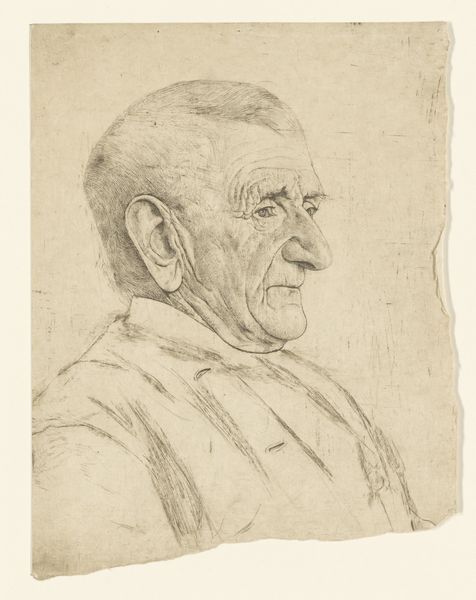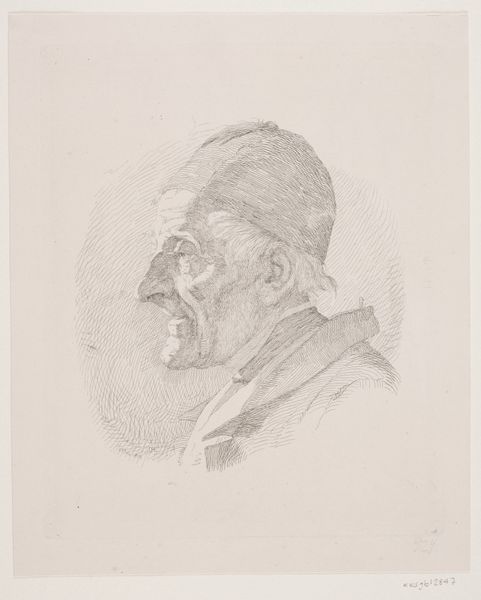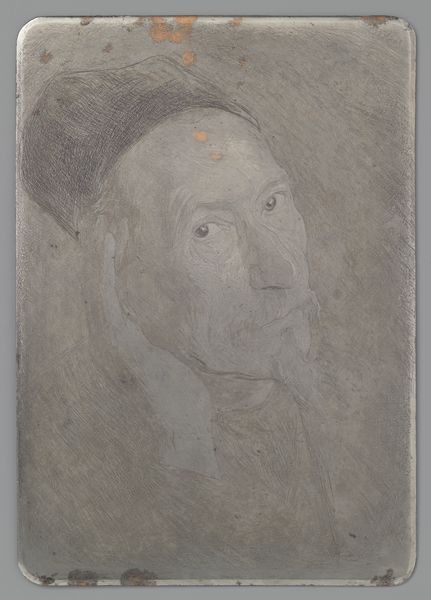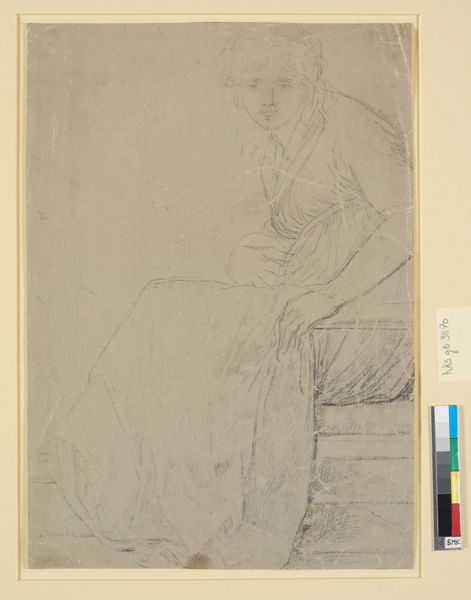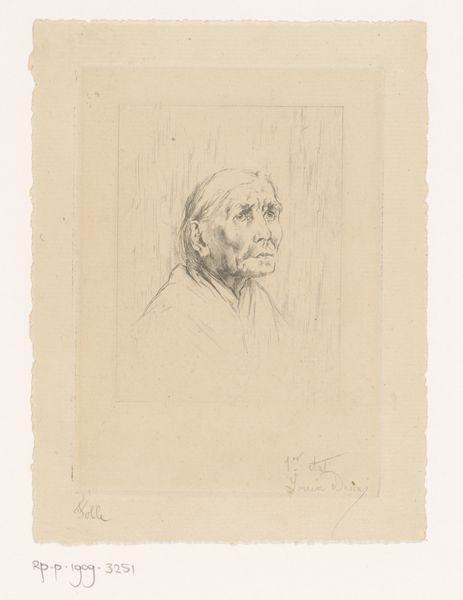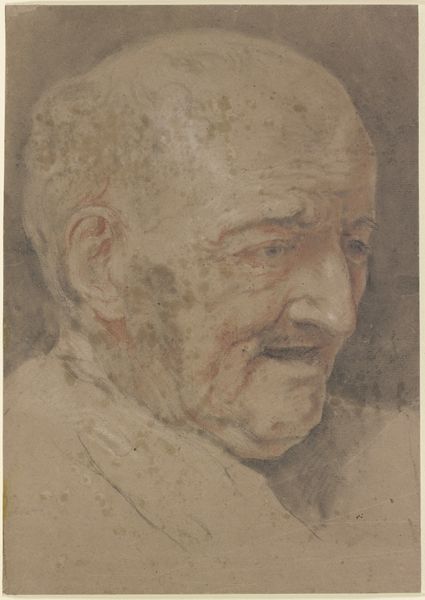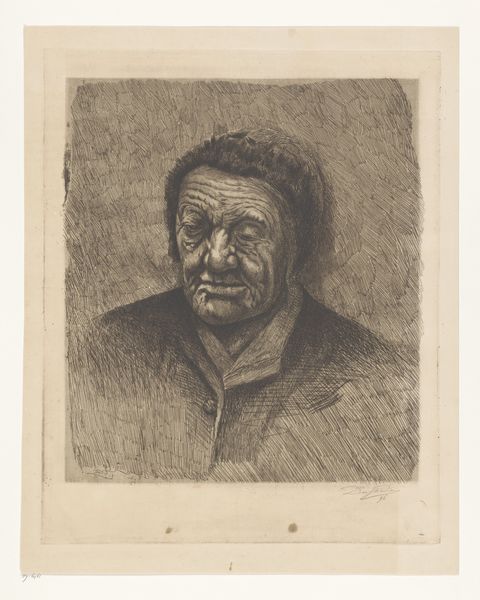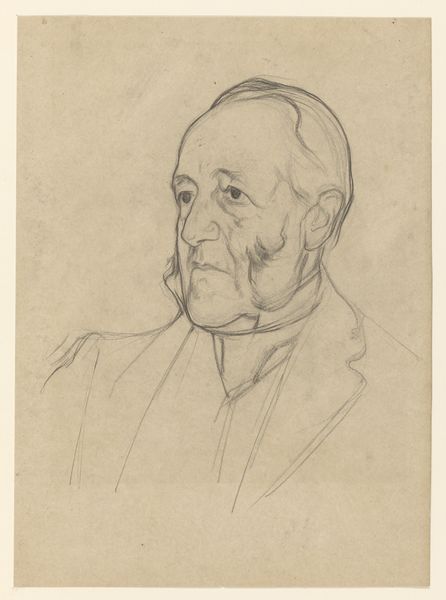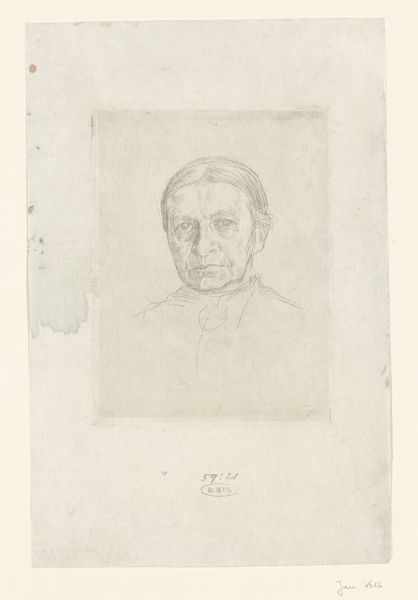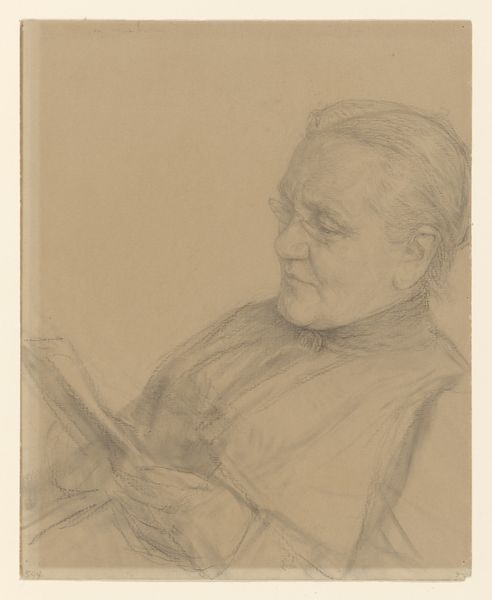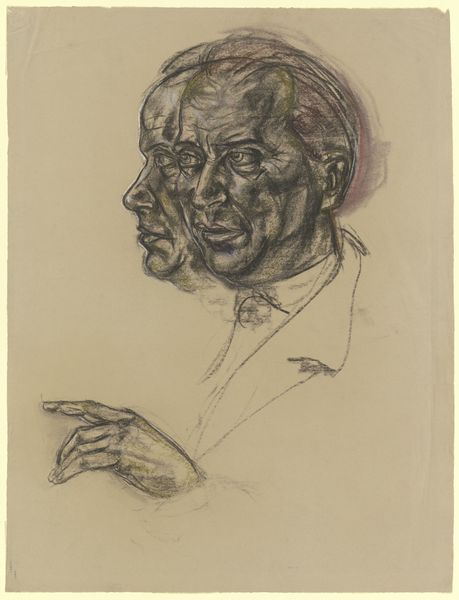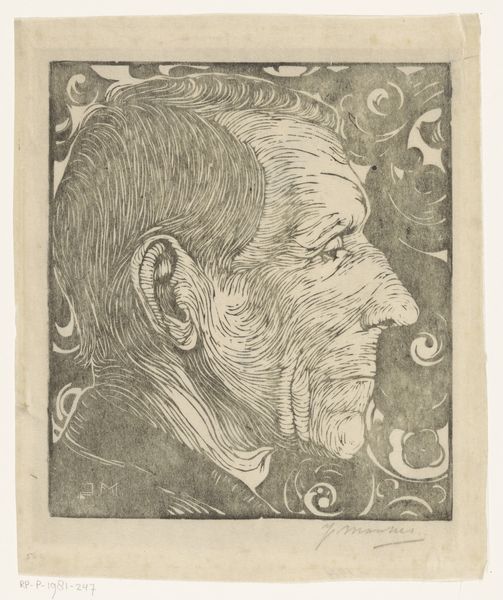
Dimensions: height 285 mm, width 231 mm
Copyright: Rijks Museum: Open Domain
Curator: The figure captured here by Jan Veth in 1892 is Jan Schaap. Editor: A weathered face etched with stories, a portrait that almost feels like looking into the past itself. There is an element of simplicity and quiet observation that gives me a feeling of melancholic calm. Curator: Schaap was a Frisian farmer and a well-known figure in his community. Jan Veth captured him in graphite and coloured pencil. Notice how Veth focused on Schaap’s face and shoulders, which draws attention to his character, reflecting Veth’s interest in psychology. Editor: Yes, there's a powerful visual language here. Wrinkles are not just signs of aging but maps of a life lived. How did society receive works that focused on ordinary citizens in this way? Curator: Veth sought to elevate the common man through art. Before mass photography, portraits were almost exclusively reserved for the elite, reinforcing a hierarchy of power and representation. By portraying Jan Schaap, Veth was taking a position to value everyday rural existence. This aligns with larger movements in the art world aiming to capture honest depictions of modern life. Editor: The subtlety is remarkable considering the media he used, especially the pencil. It feels intimate. Do you find the medium of pencil typical for a formal portrait like this? Curator: Pencil allowed for immediacy and accessibility, reflecting democratic ideals. There is no costly commission for paints. Instead we see accessible representation that helped forge an understanding and respect among disparate social strata in a changing Dutch society. This is where Veth finds value. Editor: An artwork as a social tool then! A fascinating view. Thinking of Schaap in that context reshapes my reading of the work, I understand it as an affirmation of ordinary existence, not a tragic meditation on aging. Curator: Exactly. A seemingly straightforward portrait then unveils layers of symbolic and socio-political implications, reflecting broader cultural shifts of the time. Editor: A sketch holding such power; I’ll never look at simple portraiture the same way again.
Comments
No comments
Be the first to comment and join the conversation on the ultimate creative platform.
